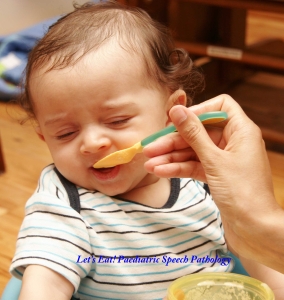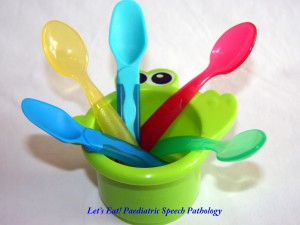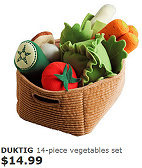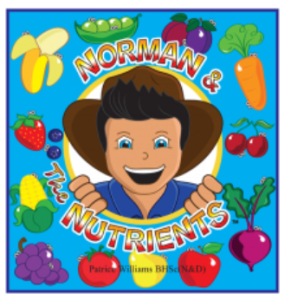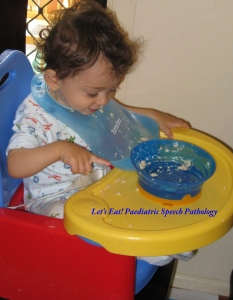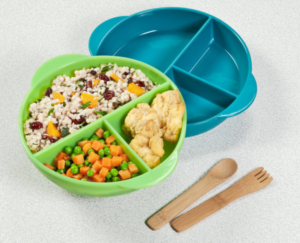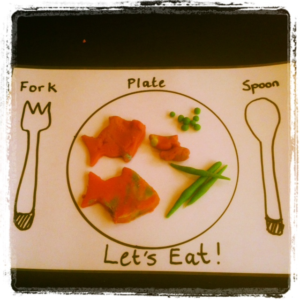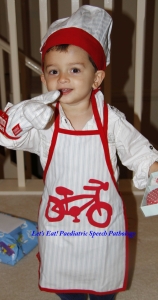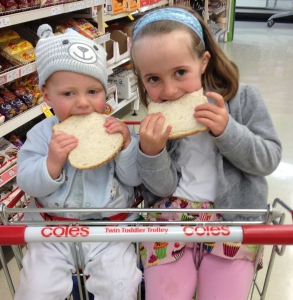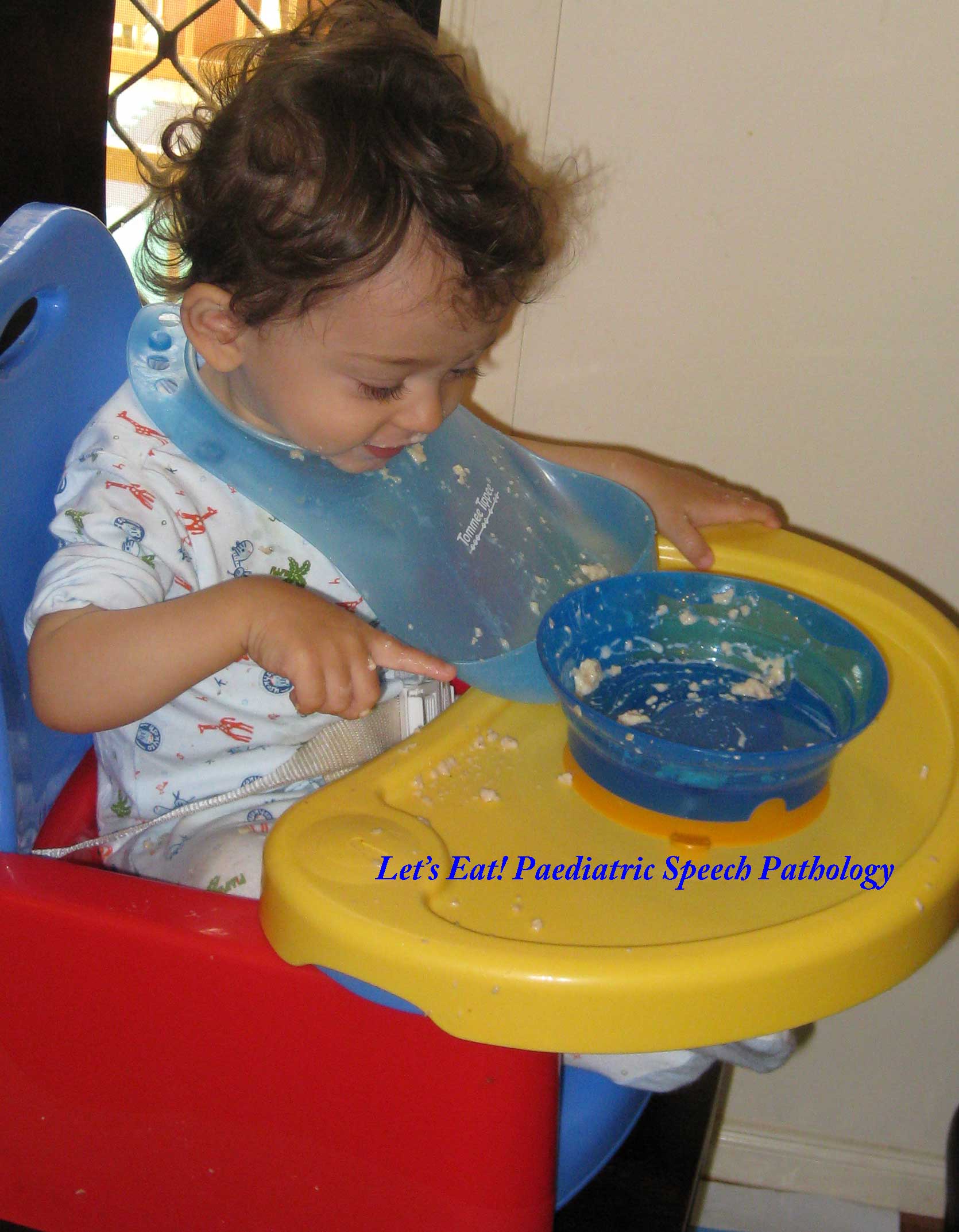
I am often asked about fussy eaters in my practice, “Let’s Eat! Paediatric Speech Pathology”. It seems like everyone has an opinion on fussy eating and parents frequently feel like they have to trawl through the internet looking for strategies before seeking any professional help.
There is actually a difference between fussy eaters and resistant eaters. Fussy eating is a stage that most toddlers go through between the ages of 10 months and 3 years (a term called neophobia). Fussy eaters will eventually grow out of it. Some parents find that with some general behavioural strategies their toddlers start being more open to the idea of trying new foods.
Resistant eaters are different, they won’t “grow out of it” and most if left to “starve it out” (a well meaning parent strategy), will refuse to eat for days. That’s because their feeding difficulties are not related to behaviour but rather linked with sensory disorders, oral-motor difficulties, food intolerances and even medical disorders like reflux.
Here’s a continuum that I frequently use when explaining it to parents:
Normal eaters_____________Picky eaters______________Resistant eaters
So how do you know the difference as a parent?
Here are some common characteristics of resistant eaters:
- Limited food selection (less than 10 foods)
- Limited food groups (i.e. will only eat carbohydrates)
- Anxiety when presented with new foods – will gag and eventually throw up
- Get very specific on how food must be presented at mealtimes e.g. on the same Thomas plate, same jam sandwich cut into the same sizes etc
- It is more common in children with developmental delays and Autism Spectrum Disorders.
Taken from “Just take a bite” (Ernsperger & Stegen-Hanson 2004). If you feel your child presents with more than one of these characteristics, then please contact a Paediatric Feeding Speech Pathologist and Paediatric Occupational Therapist who can develop an individualised feeding program. They are unlikely to grow out of their feeding issues. If they are growing well and their eating doesn’t seem to present with any functional issues, then you can make the choice as a parent whether to change their feeding patterns or not.
If your child is more of a behavioural fussy or picky eater (in the middle of that continuum above), then here are some simple strategies you can try with them at home.
1. Provide as many opportunities as you can to learn about new foods. This may mean
– Playing with plastic or fabric foods (I love the ikea range)
– Using playdoh and modelling pieces of food
– Playing with felt food boards
– Reading about food
– Going shopping (print out a list of common food pictures – use clip art and hand the list to your child, get them to find it, smell it and talk about what it might taste like)
This is a favourite book of mine. It explains healthy eating in a really kid friendly way!
2. When plating up at mealtimes, repeat a mantra to yourself: it is up to you to decide what is served at mealtimes but it is up to your child to decide how much he eats. No pressure must be placed on your child to choose what he eats on his plate and how much he eats. Gone are the days where you have to finish your plate before leaving the table, we know that this does not teach children to stop eating when their brain sends them signals that they are full. Not letting a child develop these brain messages may lead to a risk of obesity down the track.
3. Don’t force feed – my eldest son was a fussy eater and I can’t tell you how many times I tried and then stopped myself from putting something in his mouth – don’t! You will only create more negative associations and “lack of empowerment” for your child. Imagine if someone shoved something in your mouth that you didn’t want to eat?
4. Now this is one a lot of parents don’t like – let your child play with his food. A child needs to be able to touch, feel and smell food before they can feel safe to put it in their mouth. So as long as your child isn’t throwing food off the table or at his siblings, put a mess mat under chair and let him go for it.
5. When plating your child’s meal – put foods that you know he will accept and then add one new food on his plate. Don’t pressure your child to eat it, just leave it on his plate. If he asks what it is, tell him about the food (which you have hopefully played with already in step 1)
6. I loved divided plates because they reduce a child’s anxiety when a new food might “touch” their familiar foods. If you think your child would benefit from one, have a look around, most supermarkets stock them for a few dollars. Be consistent with your techniques so your child knows the routine of mealtimes and you know that it takes at least 10-15 exposures of the same food for the child to be comfortable enough around it – that’s tasting it, not just looking at it.
Picture taken from www.fab.com
7. This is a big one – try as much as you can to join in at mealtimes with your child. It would be perfect if you tried the new food with him. Weekends are a perfect family meal time environment. Go to the park, sit down together and enjoy a meal – what perfect “normal” modelling eating practice (with no stress) for your child.
8. Praise praise and praise. I am not a fan of using foods to reward kids (i.e. if you don’t eat your dinner, you won’t get dessert) because it creates positive and negative associations with foods that can have long term effects into adulthood – e.g. if I had a bad day at work, I need to come home and eat a full block of chocolate.
9. On that note, don’t criticise either, if your child doesn’t want to eat the new food, don’t tell daddy about it (in front of your child) when he gets home. Praise him for what he did do, e.g. he touched the tomato and licked it finger – woohoo! Well done!!
10. Children eat through modelling so if you are eating a packet of chips, guess what they will want? So place a big bowl of fresh ripe strawberries in the middle of the table, sit down with everyone at home and enjoy the delicious fruit – chances are – your child might enjoy them with you too.
If you find that your child is not progressing, then I suggest you ring a Paediatric Feeding Speech Pathologist (like us at Let’s Eat! Paediatric Speech Pathology). If you feel that your child has sensory feeding issues, it might be beneficial for your Speech Pathologist to work with an Occupational Therapist.
If you are concerned about your child not tracking along their weight and height growth charts because of his eating behaviours, then I encourage you to contact both a Paed Speech Pathologist and Paed Dietitian as well as discuss this further with your GP.
Good luck and happy eating!
This website and information on this blog post is provided for educational purposes. It is not meant or intended to replace Speech Pathology assessment and management nor medical or nutritional care for a child. It is recommended that you discuss any concerns or questions you might have with your Speech Pathologist and managing Doctor and develop an individualised team plan specifically for your child.
About the author of this blog post
Valerie is an Australian based Speech Pathologist with 10 years experience in Paediatric Feeding. She has recently opened a private practice called ‘Let’s Eat! Paediatric Speech Pathology’ that caters for Newcastle based babies and children with feeding difficulties and early intervention language delays. Valerie is passionate about working in the area of paediatric feeding and special needs and has been involved in the teaching and training of Australian Speech Pathology University students and allied health professionals. You can find out more about Valerie Gent and ‘Let’s Eat! Paediatric Speech Pathology’ via her website www.letseatspeech.com.au and Facebook page www.facebook.com/LetsEatPaediatric SpeechPathology or email her on valerie.gent@letseatspeech.com.au

